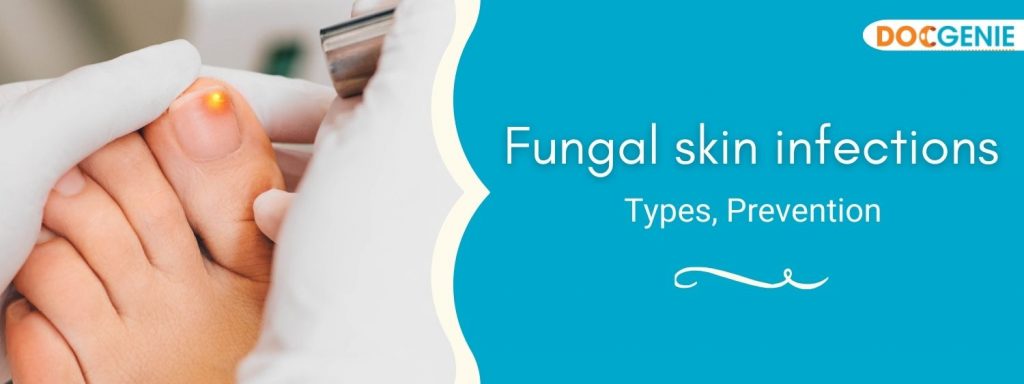Fungal Skin Infections: Types, Prevention

Fungal skin infections
Millions of fungi live in this world. They live on plants, household surfaces, in the dirt, and also on the skin. At times, these fungi may cause skin problems like rashes or bumps.
Common fungal skin infections like athlete's foot, jock itch, and ringworm, are known to be very itchy and bothersome. The infections may occur anywhere on the body but are generally not serious. The infection-causing fungi can easily get to the body and move around. In most cases, fungal infections, also called mycosis, do not spread beyond the surface of the skin, hence, are easily cured.
Types of Fungal Skin Infections
Athlete's Foot
The athlete's foot, or tinea pedis, is a fungal infection of the foot. The infection-causing fungi live on the dead tissue of the hair, toenails, and/or outer surface of the skin. While Trichophyton rubrum is the most common fungus that causes this infection, four other types of fungi may also lead to Athlete's foot.
Signs of an athlete's foot may include -
- Peeling, cracking, and scaly feet
- Red skin softened or broken down
- Itching
- Burning
Dermatologists usually prescribe an antifungal medicine to treat Athlete's foot. However, in severe cases, other drugs might also be recommended by the doctor. To avoid infection try the following tips -
- Keep the feet clean and dry to avoid infection
- Wear shoes that allow the feet to breathe
- Wear shower sandals in public showering areas
- Clean the feet every day with soap and water
- Dry the feet thoroughly
Jock Itch
Jock itch caused by fungus is also called Tinea Cruris. This fungus loves warm, moist areas like genitals, inner thighs, and buttocks, therefore infections are more common during summer. It appears like a red, itchy rash and is often ring-shaped with raised edges. Jock itch is mildly contagious and spreads from direct contact or indirectly through objects contaminated with the fungus.
Symptoms
- Itching
- Chafing
- Burning
- Flaking, peeling, or cracking skin
To avoid infection it is important to keep the infected area clean and dry and change underwear every day. Dermatologists usually prescribe over-the-counter antifungal medicines to treat jock itch. In severe cases, doctors may give prescription creams.
Ringworm
Ringworm, or tinea corporis, is another type of fungal skin infection and gets its name from the ring-shaped rash with a zigzag, worm-like edge.
Symptoms include red, circular, flat sore. The outer part of the sore often appears raised but the skin in the middle part of the sore may look normal. Dermatologists usually prescribe antifungal creams, but in case of severe infections, doctors may prescribe medicines to be taken by mouth. It's best to consult the general physician or dermatologist to get the correct diagnosis and treatment.
Yeast Infections
Yeast infections of the skin are caused by Candida fungus.
Symptoms of yeast infection
- Symptoms of yeast infection on the skin include itching and burning rashes, fluid oozing patches, and bumps that look like pimples.
- Symptoms of yeast infection of the mouth include pain along with white patches on the tongue and inside the cheeks.
- Symptoms of vaginal yeast infection include yellow or white discharge from the vagina, itching, and burning, and redness in the outer part of the vagina.
Usually, medicated creams can treat skin yeast infections. For vaginal infection dermatologists generally prescribe medicated suppositories. Medicated mouthwash or lozenges are given for oral thrush. In case of a severe infection, doctors may prescribe oral anti-yeast medications.
In case you are noticing any of the above-mentioned signs consult a dermatologist at the earliest. With DocGenie, it is now easy to seek medical advice from dermatologists from the comfort of your home. All the top Dermatologists available on Docgenie have 25+ years of experience in treating a host of conditions related to your skin, hair, and nails. They will diagnose the causes of the conditions and provide the correct most effective treatment.
Author Details

Dr.Rachna Kucheria
MD (Community Medicine) AIIMS New Delhi
MD (Family Medicine) USC California
Obesity Medicine Certification The American Board of Obesity Medicine
30+ Years of experience